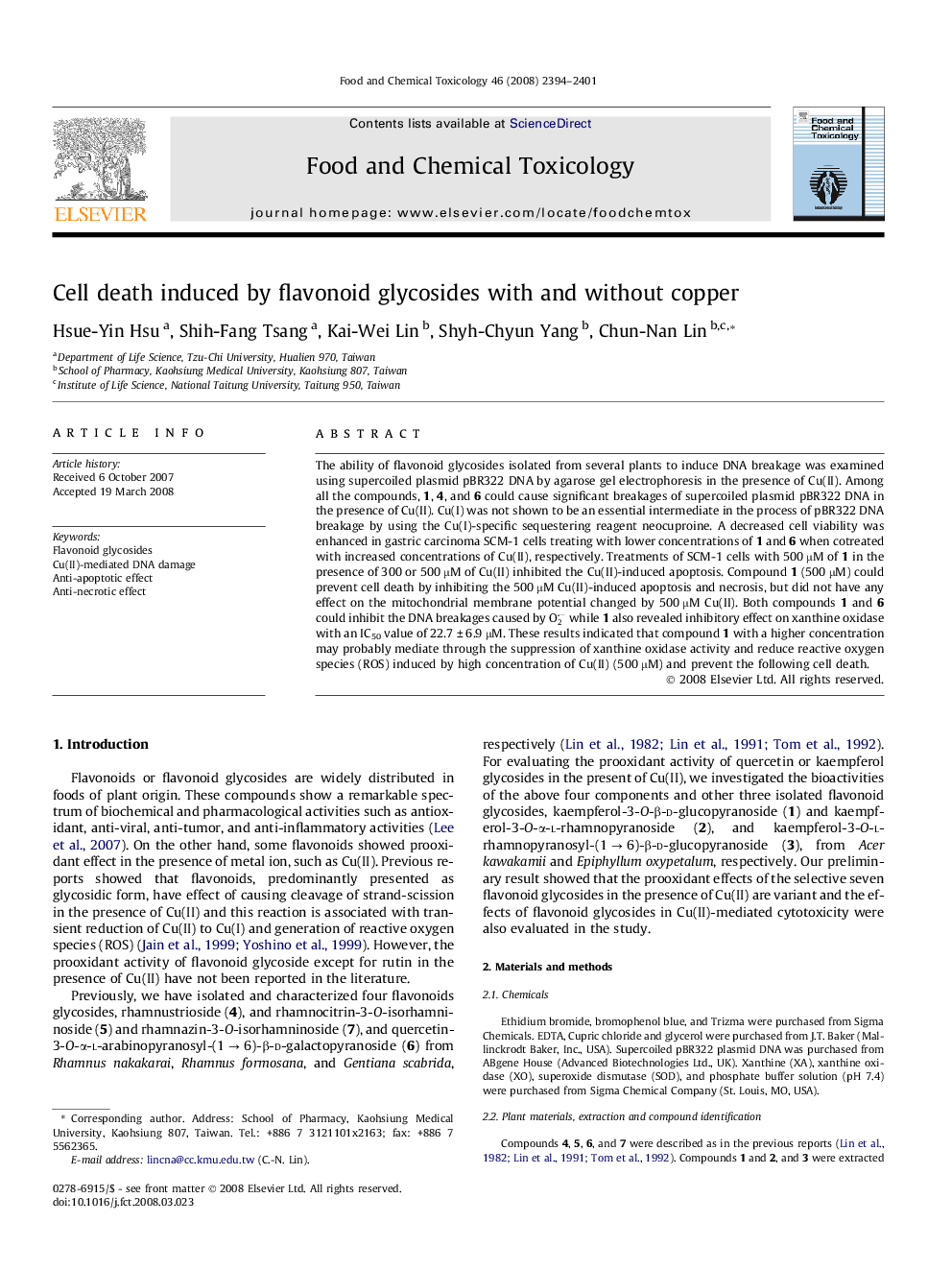| Article ID | Journal | Published Year | Pages | File Type |
|---|---|---|---|---|
| 2586573 | Food and Chemical Toxicology | 2008 | 8 Pages |
The ability of flavonoid glycosides isolated from several plants to induce DNA breakage was examined using supercoiled plasmid pBR322 DNA by agarose gel electrophoresis in the presence of Cu(II). Among all the compounds, 1, 4, and 6 could cause significant breakages of supercoiled plasmid pBR322 DNA in the presence of Cu(II). Cu(I) was not shown to be an essential intermediate in the process of pBR322 DNA breakage by using the Cu(I)-specific sequestering reagent neocuproine. A decreased cell viability was enhanced in gastric carcinoma SCM-1 cells treating with lower concentrations of 1 and 6 when cotreated with increased concentrations of Cu(II), respectively. Treatments of SCM-1 cells with 500 μM of 1 in the presence of 300 or 500 μM of Cu(II) inhibited the Cu(II)-induced apoptosis. Compound 1 (500 μM) could prevent cell death by inhibiting the 500 μM Cu(II)-induced apoptosis and necrosis, but did not have any effect on the mitochondrial membrane potential changed by 500 μM Cu(II). Both compounds 1 and 6 could inhibit the DNA breakages caused by O2- while 1 also revealed inhibitory effect on xanthine oxidase with an IC50 value of 22.7 ± 6.9 μM. These results indicated that compound 1 with a higher concentration may probably mediate through the suppression of xanthine oxidase activity and reduce reactive oxygen species (ROS) induced by high concentration of Cu(II) (500 μM) and prevent the following cell death.
